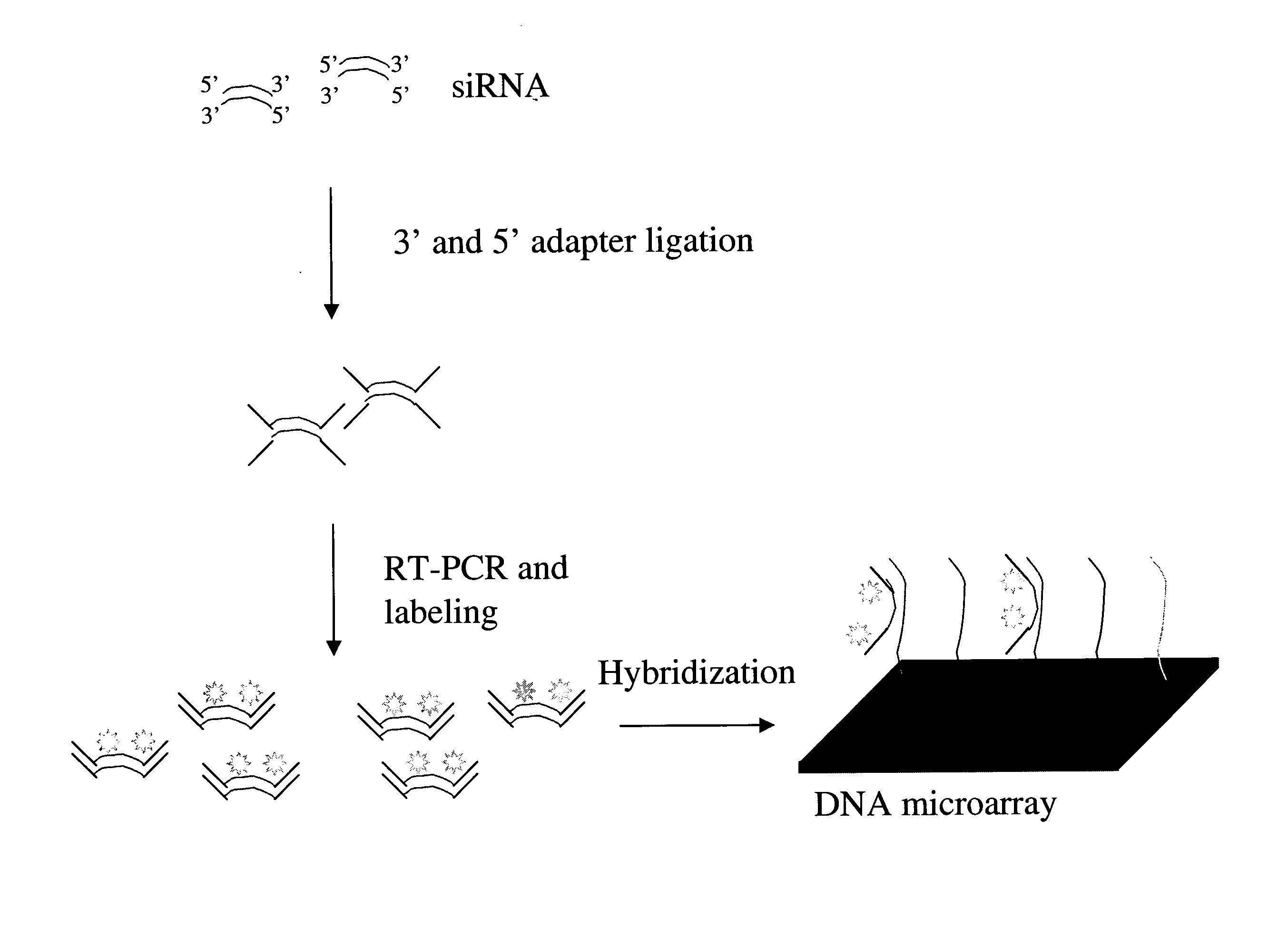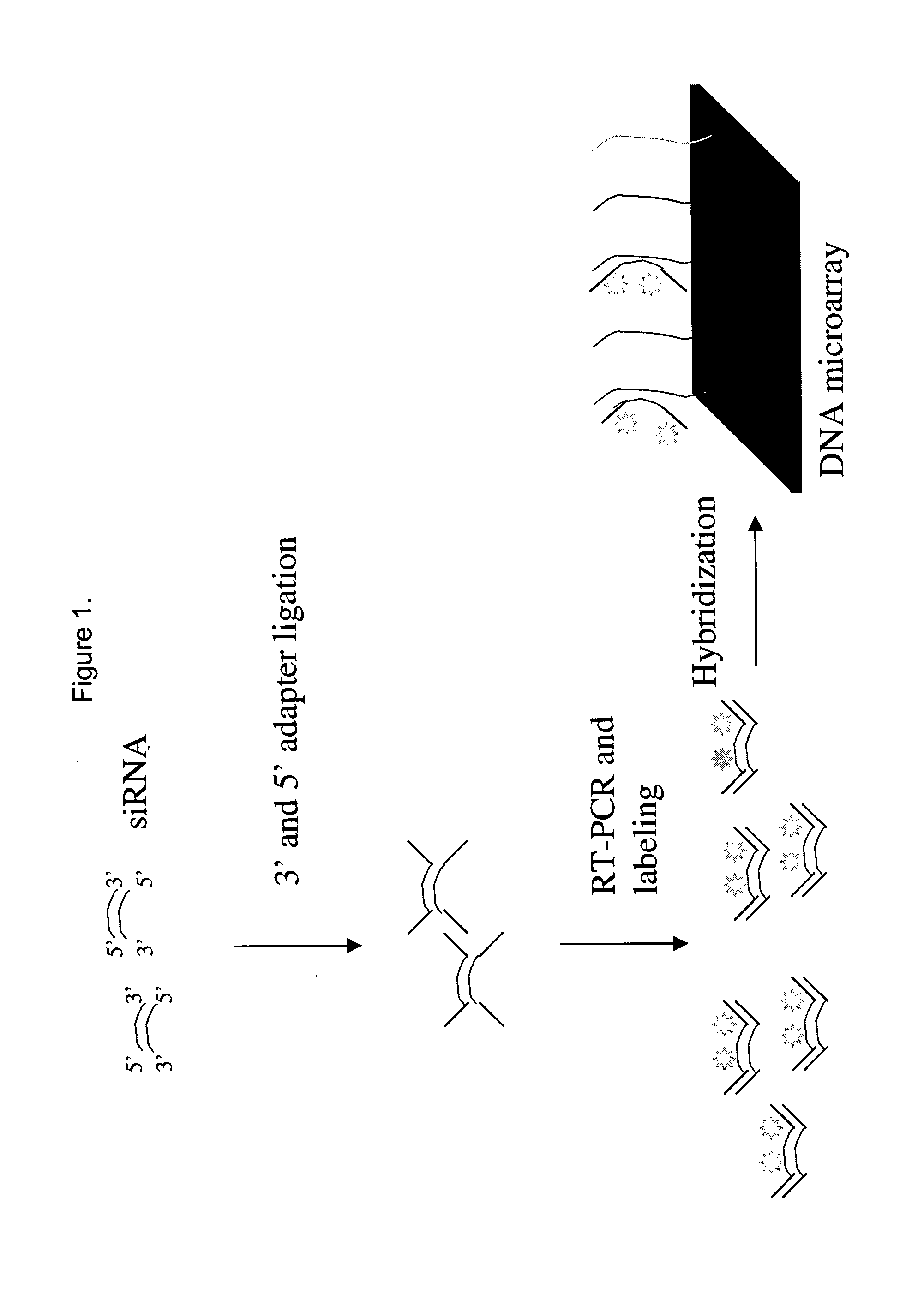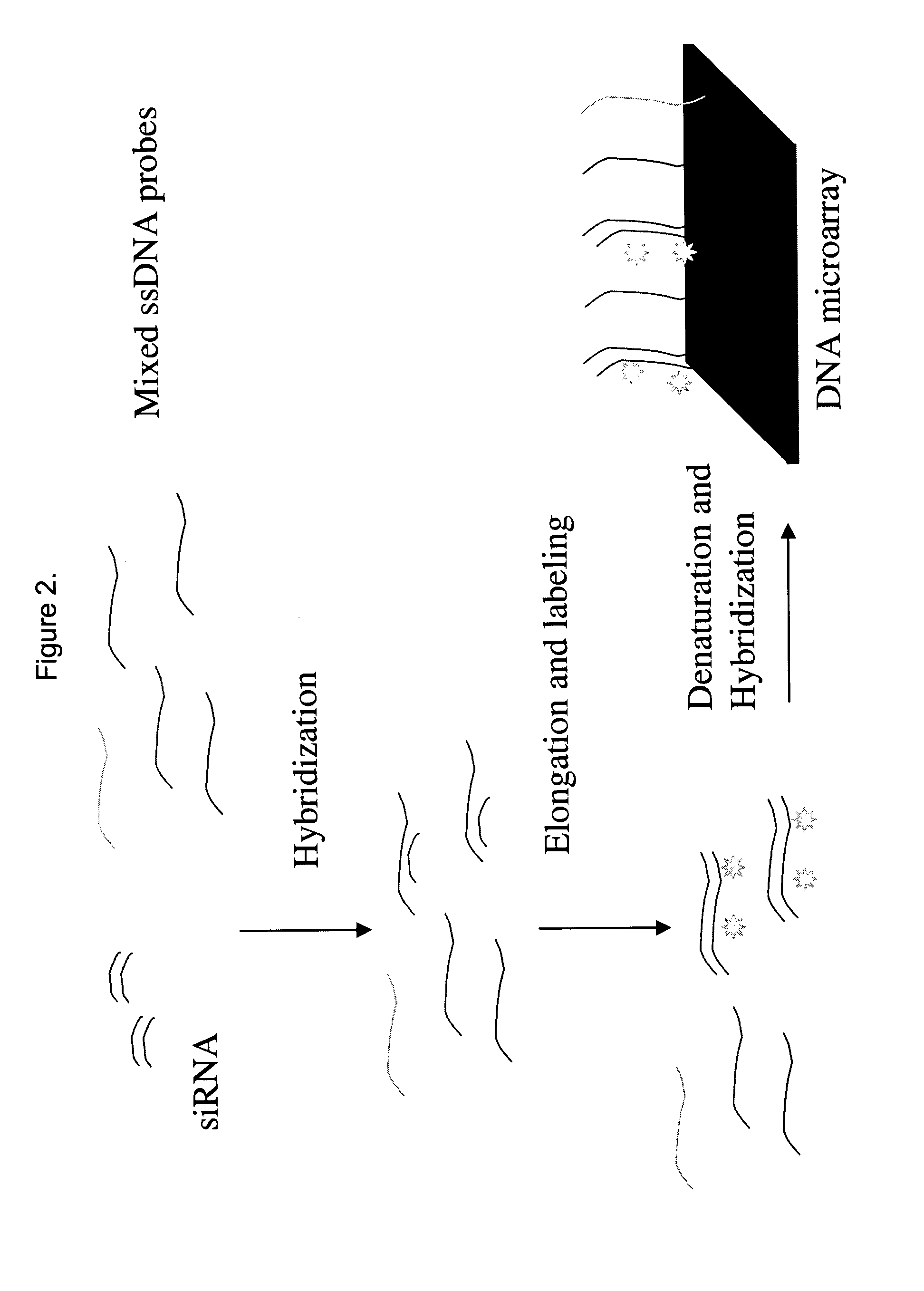Detection and quantification of siRNA on microarrays
a microarray and sirna technology, applied in the field of detection and quantification of sirna on microarrays, can solve the problems of difficult detection of naturally occurring sirna, insufficient activation or absence of activation, and no previously cited document provides an easy method for detecting and analyzing. , to achieve the effect of rapid and reliable detection and identification of rnai
- Summary
- Abstract
- Description
- Claims
- Application Information
AI Technical Summary
Benefits of technology
Problems solved by technology
Method used
Image
Examples
example
[0080] siRNAs were extracted from the cell medium and subsequently treated with proteinase K and were separated on a denaturing 15% polyacrylamide gel. A band, including a size range of at least 18-24 nt, was excised and then eluted into 0.3 M NaCl overnight at 4° C. in siliconized tubes. The RNA was recovered by ethanol precipitation and then dephosphorylated (30 μl reaction, 50° C., 30 min, 10 U alkaline phosphatase; Roche).
[0081] The reaction was stopped by phenol / chloroform extraction, and the RNA was ethanol precipitated. The 3′ adapter oligonucleotide (pUUUaaccg catccttctcx: uppercase, RNA; lowercase, DNA; p, phosphate; x, 4-hydroxymethylbenzyl) was then ligated to the dephosphorylated ˜21-nt RNA (20 μL reaction, 37° C., 30 min, 5 μM 3′ adapter, 50 mM Tris-HCI at pH 7.6, 10 mM MgCl2, 0.2 mM ATP, 0.1 mg / ml acetylated BSA, 15% DMSO, 25 U T4 RNA ligase; Amersham-Pharmacia) (Pan and Uhlenbeck 1992). The ligation reaction was stopped by the addition of an equal volume of 8 M urea / ...
PUM
| Property | Measurement | Unit |
|---|---|---|
| pH | aaaaa | aaaaa |
| pH | aaaaa | aaaaa |
| elongation | aaaaa | aaaaa |
Abstract
Description
Claims
Application Information
 Login to View More
Login to View More - R&D
- Intellectual Property
- Life Sciences
- Materials
- Tech Scout
- Unparalleled Data Quality
- Higher Quality Content
- 60% Fewer Hallucinations
Browse by: Latest US Patents, China's latest patents, Technical Efficacy Thesaurus, Application Domain, Technology Topic, Popular Technical Reports.
© 2025 PatSnap. All rights reserved.Legal|Privacy policy|Modern Slavery Act Transparency Statement|Sitemap|About US| Contact US: help@patsnap.com



